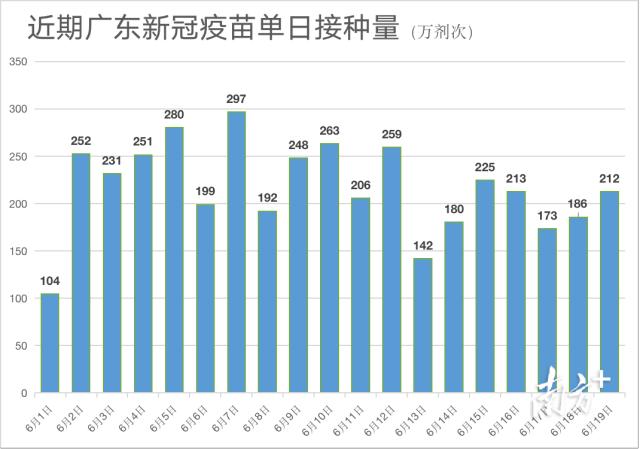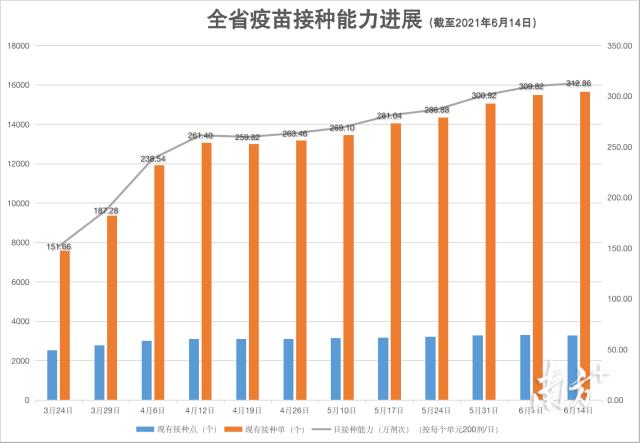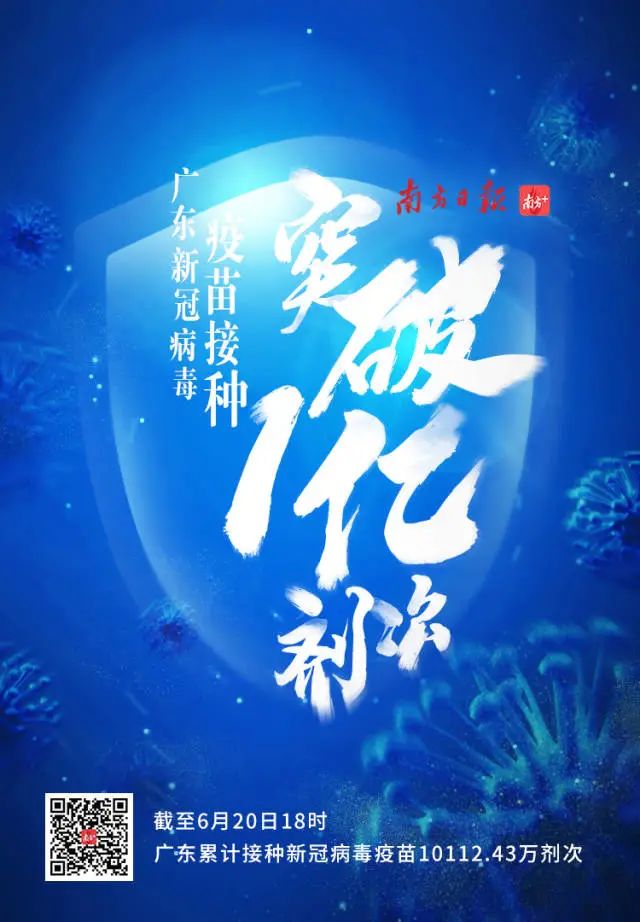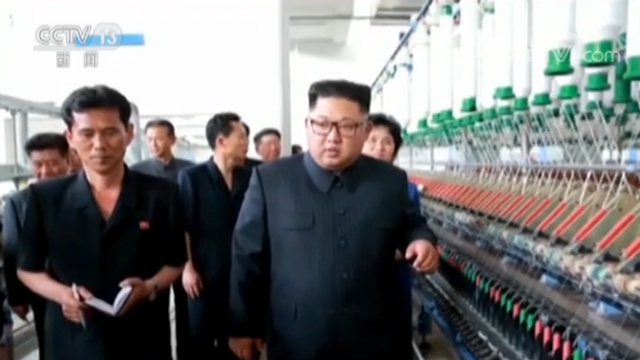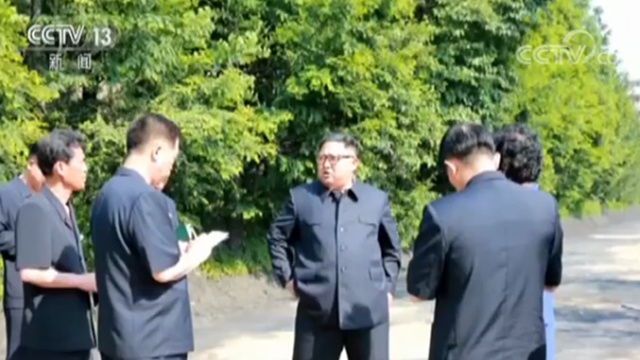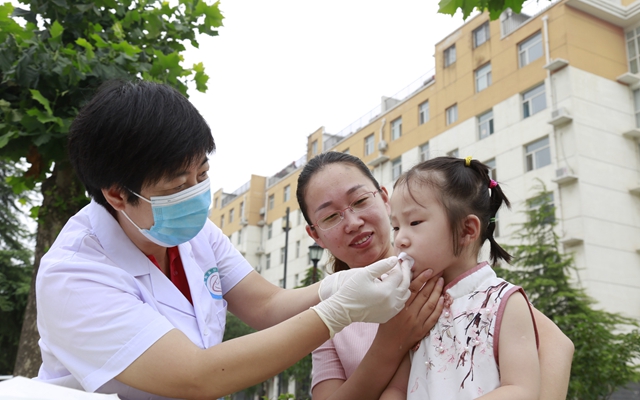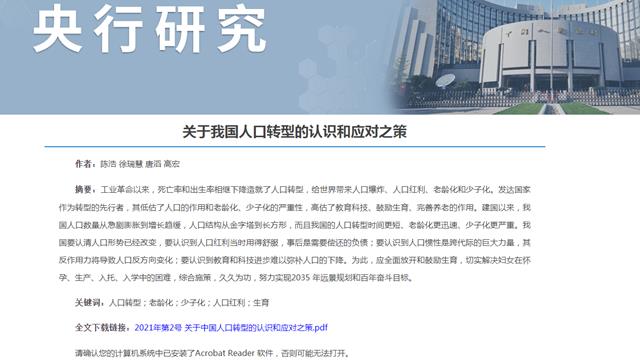The eighth online interview of Ji ‘an Municipal People’s Government in 2023, Ji ‘an Municipal Water Conservancy Bureau "tackling difficulties and developing water conservancy and water supply, ensurin
Interview topic: tackling difficulties and prospering water conservancyWater supply protects irrigation and benefits people’s livelihood.
Interview time:202threeyear11moon29sunundernoon15:00-15:30(Duration30Minutes, guests in advance15-30 minutes into the studio)
Interview location: Bureau of Letters and Calls, East Annex Building, Municipal Administration Center5th floor (online interview room)
Interviewer: Guo Liyu (Member of the Party Committee and Deputy Director of Ji ‘an Water Resources Bureau)
Interview content:
【ask】:Water is the source of life, and water conservancy is the lifeblood of agriculture. The Water Conservancy Bureau is an important functional department of the municipal government. First of all, please ask Director Guo to briefly introduce the functions of the Water Conservancy Bureau and the basic situation of water conservancy in our city.
[Director Guo]:Ok, host. According to institutional reformThe main functions of the Municipal Water Conservancy Bureau are: to ensure the rational development and utilization of water resources, to organize and implement the strictest water resources management system, and to be responsible for water conservation. Organize and guide the investment and construction of water conservancy projects, the management, protection and comprehensive utilization of water conservancy facilities, waters and shorelines in the city, and guide the ecological protection and restoration of rivers and lakes. Guide and supervise the construction and operation management of water conservancy projects. Responsible for soil and water conservation and guide rural water conservancy work. To guide water administration supervision and law enforcement, be responsible for investigating and handling major water-related violations, and coordinate and arbitrate cross-county (city, district) water disputes. Responsible for the safety production of water conservancy industry according to law, and organize and guide the safety supervision and management of reservoirs, hydropower dams and rural hydropower stations. To undertake technical support for monitoring and early warning of water regime and drought, emergency rescue for flood prevention and dispatching of important water projects. Guide the full implementation of the long river and lake system, and be responsible for the early resettlement and late support of reservoir resettlement.
Ji ‘an is a water conservancy city, located in the middle reaches of the Ganjiang River, which transits through Ji ‘an.264 kilometers, accounting for more than one third of the total length. Five of the six cascade hubs of Ganjiang River are located in our city, namely Wan ‘an Reservoir, Jinggangshan Navigation and Power Hub, Shi Hu Tang Navigation and Power Hub, Xiajiang Water Conservancy Hub and Xingan Navigation and Power Hub. Five of the 13 main tributaries of Ganjiang River are in our city, namely, 256 km of Heshui River, 176 km of Suichuan River, 172 km of Shushui River, 171 km of Wujiang River and 162 km of Gudang River. There are 733 rivers with a basin area of more than 10 square kilometers in China, with developed water systems and dense river networks. There are 8 large reservoirs in the city (including Wan ‘an Reservoir with a total storage capacity of 2.216 billion cubic meters and Xiajiang Water Control Project with a total storage capacity of 1.187 billion cubic meters), 41 medium-sized reservoirs, 1,191 small reservoirs, 19,500 mountain ponds and 530 hydropower stations. Ji ‘an is abundant in rainfall, with an average annual precipitation of 1556mm and an average annual water resource of 22.7 billion cubic meters.
【ask】:Many small reservoirs in Ji ‘an City have been built and operated for decades, and there are some security risks. How does Ji ‘an City eliminate the security risks of small reservoirs?
【Director Guo】:Reservoir safety concerns people’s production, life and property safety.The reinforcement of dangerous reservoirs is a project deployed by the CPC Central Committee, the State Council and the provincial party committee and government.In the "14th Five-Year Plan" major water conservancy work, Ji ‘an City strengthened its political responsibility, took the initiative to pressurize, and accelerated the completion of the reinforcement of dangerous reservoirs.
One is active pressurization,Speed up the attack.according toThe task of "five-year task completed in three years" requires that our city win the central funds.167 million yuan, provincial levelGeneral debt for reinforcement of small reservoirsone.31eight100 million yuan, the implementation of local matching funds15.89 million yuan. Compacting the responsibilities of all parties involved in the construction and fighting on the wall chart, the Municipal Water Conservancy Bureau has established a working mechanism for the supervision of the bureau leaders, and eachThe Zhou Party Committee specially dispatches a project schedule, informs the counties (cities, districts) where the project is lagging behind, and sets up an expert assistance team to solve the technical problems in project construction. At present,The "14 th Five-Year Plan" taskBlock 285Dangerous reservoirs have all been completed., in which96% of the tasks have been completed before the end of 2022.
The second is digital empowerment and intelligent management.There are small reservoirs registered in Ji ‘an City.1191, including 183 small (1) reservoirs and 1008 small (2) reservoirs. With the development of dam safety monitoring and intelligent monitoring system as the main construction content, the city has carried out three annual construction tasks in 2021, 2022 and 2023. Based on "a chess game", the city has built monitoring facilities such as water level, rainfall, seepage flow, seepage pressure and surface deformation according to unified standards. According to the province’s smart water conservancy standards, the data will be unified to the provincial monitoring platform of "first-level deployment and third-level application" to achieve unified convergence and sharing at the provincial, city and county levels.
The third is to reform and create standards and beautify the ecology.insist on"Pay equal attention to construction and management" and pay attention to standardized operation management after reservoir reinforcement. Xingan County has successfully created the second batch of "model for deepening the reform of management system and mechanism of small reservoirs" by the Ministry of Water Resources.county",Qingyuan District, Yongfeng County and Anfu County have successfully established counties that meet the standards for deepening the reform of small reservoir management system and mechanism in the province in 2022. combineEcological landscape improvement,Global tourism and rural revitalization strategy, to create"One Library and One Scene",On the basis of ensuring that the original flood control and agricultural irrigation functions of the reservoir will not be reduced, small reservoirs with smooth access to the reservoir, high water quality, beautiful environment in the reservoir area, good irrigation efficiency and rich historical and cultural heritage will be selected for implementation.The construction of "one reservoir and one scene" has been highly affirmed by the Ministry of Water Resources and the Provincial Water Resources Department.
【ask】:There are many rivers in Ji ‘an, which is a beautiful water city in the south of the Yangtze River. However, in recent years, some garbage piles can be seen from time to time in the river.phenomenonDestroy the beauty of rivers. What measures does Ji ‘an take to maintain beautiful rivers and lakes?
【Director Guo】:My cityConscientiously practice the supreme leader’s ecological civilization thought, thoroughly implement the spirit of the 20th Party Congress, strictly implement the decision-making arrangements of the CPC Central Committee, the State Council, the provincial party committee and the provincial government on strengthening the long system of rivers and lakes, and resolutely shoulder the responsibility of management and protection of rivers and lakes with stronger responsibility.,In 2023, the city launched a three-year campaign to tackle the "four chaos" in rivers and lakes, focusing on rectifying the problems of disorderly piling, occupation, construction and mining in rivers and lakes.
The first is to strengthen organizational leadership.Issued the "Deepening the Rivers and Lakes in Ji ‘an City"Three-year action plan for tackling the "four chaos",EstablishedWith the main leaders of the Bureau as the team leader, the relevant leaders in charge of the Bureau as the deputy team leader, and the main leaders of the water conservancy bureaus of counties (cities, districts) and the heads of relevant departments of the Municipal Water Conservancy Bureau as members.Rivers and lakes in Ji’ an citySpecial class for tackling the "Four Revolutions".Various measures, such as comprehensive investigation without leaving dead ends, strict clean-up and rectification, concerted efforts by river chiefs at all levels, unannounced visits, supervision and tracking, were taken to effectively promote rivers and lakes.Clean-up and rectification of the "four chaos"
The second is a comprehensive inventory.Through daily river patrol by river captains, river patrolmen and public welfare posts, all rivers, lakes, reservoirs and flood channels in the area are surveyed by using unmanned aerial vehicles, satellite remote sensing, video surveillance and other technical means."dragnet" investigation,Cumulative investigation97 rivers, 2025km, 319 "four chaos" problems were solved, and the problem rectification account was established, and 254 problems have been rectified.
The third is to strengthen the tracking and efficiency.In view of the problems found in the comprehensive investigation, the objectives, tasks, specific measures, division of responsibilities and schedule of the clean-up and rectification will be refined item by item, and the number will be gradually sold according to the law, seeking truth from facts, classifying policies and policies.strengthenTo all placesCheck and supervise, supervise and negotiate the difficulties and key issues encountered during the attack, hand them over on the spot, follow them up and report them regularly, and ask all relevant departments to take the initiative to take responsibility, refine measures, ensure quality and catch up with the progress, and ensure that the remediation tasks are completed on schedule.
The fourth is to establish a long-term mechanism.Yihe lakeTaking the opportunity of the "Four Chaos" attack, we will constantly consolidate the management foundation of rivers and lakes, standardize the handling of illegal construction involving water, conscientiously sum up the achievements, existing problems and experience of the action, constantly improve the long-term mechanism for river and lake control, and "zero tolerance" for the incremental problems of the "Four Chaos",Promote the continuous improvement of the city’s rivers and lakes, and add ecological color to the beautiful picture of Jinlu Mausoleum in Wangjun County, Jiangnan in the new era.
【ask】With the development of the integration of urban and rural water supply, the requirements for safe drinking water in rural areas will become higher and higher. What is the evaluation standard for drinking water safety?
【outer city walldirector general】:Ok, thank you for your question. First of all, let me introduce the progress of this work to you:
According to the rural drinking water safety evaluation criteria, drinking water safety evaluation indicators mainly includeFour items: water quantity, water quality, water convenience and water supply guarantee rate.
(1) Water quantity: The amount of drinking water per person per day in water-rich areas is 35 liters or more, but less than 35 liters is not enough. In water-deficient areas, the amount of drinking water that each person can get every day is 20 liters or more, but less than 20 liters is not enough.
(2) Water quality: The water quality test report issued by the water quality testing institutions of health and water conservancy departments at or above the county level and the third-party water quality testing institutions with CMA qualification can be used as the basis for water quality evaluation. For users of decentralized water supply projects, simple and suitable methods such as "looking, smelling, asking and tasting" can be used to evaluate the water quality on the spot.
(3) Convenience of water use: it can be evaluated as convenience if the time for water supply to households and single water intake is 20 minutes or less, or the horizontal distance of water intake is 800 meters or less, or the vertical distance of water intake is 80 meters or less. Pastoral areas may appropriately relax the requirements.
(4) Water supply guarantee rate: the cumulative time of water cut-off and water quantity failing to meet the standards in one year shall not exceed 36 days.
【ask】We usually use less tap water, mainly because we are worried that disinfection is not in place, and tap water smells of chlorine. Would you please help us solve the confusion?
[Director Guo]:Thank you for your question. Drinking water disinfection is to eliminate bacteria in water,Viruses and protozoan cysts and other pathogenic microorganisms, to prevent the spread of diseases through drinking water, drinking water must be disinfected. If we do not pay attention to the disinfection of drinking water, it may lead to intestinal diseases and even acute infectious diseases. At present, disinfection methods commonly used in rural water supply include sodium hypochlorite disinfection and chlorine dioxide disinfection. Water supply projects with more than 1000 people are generally equipped with disinfection equipment for disinfection. Small decentralized water supply projects can be disinfected by adding bleaching powder and bleaching tablets. Adopt chlorine disinfection(sodium hypochlorite, bleaching powder, etc.), there will be a certain chlorine smell in the water. For most people, tap water doesn’t smell or taste obvious. The content of disinfectant in tap water meets the requirements of national standards and will not cause harm to the body.
【ask】I’m from Laicun Village, wujiang town, Jishui County. As a farmer, last year’s drought made us lose a lot. Although the weather is good this year, there will be a drought in the future. Will we have any new protection?
[Director Guo]:According to our cityAccording to the plan of drought relief and irrigation protection in 2023, Laicun irrigation station was built in Laicun Village, wujiang town, Jishui County this year, which can solve the drought area of 1,000 mu of concentrated contiguous farmland, and has been completed at present, which can ensure the daily needs of the people nearby, including drought irrigation. From the perspective of the whole city, in 2022, the whole city suffered an extremely rare large-scale drought phenomenon. In order to completely eliminate the drought, promote rural revitalization, and effectively solve the problem of agricultural irrigation in drought-prone areas and scattered farmland areas, Ji ‘an City launched a campaign to combat drought and protect irrigation in the whole city. According to the "Implementation Plan for Promoting the Action of Fighting Drought and Protecting Irrigation", it is clear that in the county area, according to the construction principle of "first big and then small, first heavy and then light", 70 water-saving pipeline irrigation pilot projects will be implemented according to local conditions, 137 pumping irrigation station will be built in flood-prone areas near rivers, 1,000 drought-resistant wells will be built in scattered flood-prone areas, and the irrigation area will be restored and improved by 230,000 mu, which is a disaster prevention and guarantee.
【ask】:In order to ensure the safety of people’s lives and property, what are the key tasks of flood and drought disaster prevention in the water conservancy department this year?
【Director Guo】:As of this yearAt the end of November, the average rainfall in the city was 1565.2 mm, which was basically the same as the average for many years. The water level of rivers and reservoirs was relatively stable, and there was no serious drought disaster during the year, and there was no difficulty in drinking water due to drought. The precipitation is generally "more in the north and south, less in the middle". A total of 28 rainfalls occurred, and four typhoons, such as Taili, Du Surui, Anemone and Xiaoquan, successively affected our city. Among them, the typhoon "Taili" on July 22 caused the average rainfall in Xingan County and Xiajiang County to exceed 100 mm.
Anchoring of water conservancy departments in the whole city"No casualties, no dam failure, no breaches of important dikes and no impact on important infrastructure" and the goal of ensuring the safety of urban and rural water supply, we have done enough "pre-preparation" and practical "prevention" measures to successfully cope with multiple rounds of heavy rainfall and drought, providing a solid security guarantee for the city’s stable economic growth and social harmony and stability.
First, preparations are put in place before the flood season.Fully implement the whole city1240 reservoirs, 530 hydropower stations, 129 key dikes with "five responsible persons", 1644 key mountain ponds with "three responsible persons", and 1181 mountain torrents with five-level responsibilities have all been put in place. Strictly organize and carry out large-scale investigation of hidden dangers of flood control, and continue to carry out investigation and rectification of outstanding problems that hinder flood discharge in rivers, the "four chaos" action of rivers and lakes and special hidden dangers investigation. According to the requirements, the Emergency Plan for Flood and Drought Disaster Prevention of Ji ‘an Water Conservancy Bureau was revised and improved, and various flood control schemes for hydraulic engineering were compiled.The second is to actively prevent and respond to heavy rainfall.implement24-hour duty system. Adhere to both flood control and drought relief, strengthen supervision over the use of water projects,According to the water storage situation of reservoirs and the characteristics of different reservoirs,“One library and one policy"optimizedispatchScheme. strengthenMonitoring, forecasting and early warning. Since the beginning of this year, the water conservancy department has issued an early warning of mountain torrents.There were 531 times, nearly 19,100 early warning messages, more than 200,000 early warning service people, and 572 people were transferred. No casualties were reported.The third is to plan drought prevention and drought relief in advance.In the critical period of water management and water use after the end of the main flood season, according to"One reservoir and one policy" requires the implementation of water storage, water saving and water conservation measures, thus avoiding the waste of water resources. Precise scheduling of water. Regularly dispatch large and medium-sized reservoirs, accurately grasp the current situation of reservoir storage, current and next water demand, and formulate feasible water use plans for reservoirs and irrigation areas. Carry out the practical work of fighting drought and protecting irrigation and people’s livelihood. This year, the work of drought-resistant irrigation and urban-rural water supply integration has been incorporated into the ten livelihood issues of Ji ‘an Municipal Government. It is planned to implement 70 pilot projects of water-saving pipeline irrigation, build 137 pumping irrigation station, build 1,000 drought-resistant wells, and restore and improve the irrigation area of 230,000 mu, which is 90% completed at present, providing a strong guarantee for drought prevention and drought relief.
【ask】:River sand and gravel is an important building material in social and economic construction. In recent years, with the rapid development of social and economic construction, the demand is increasing. As the competent department, how does the Municipal Water Conservancy Bureau manage and ensure the use of sand by the masses of enterprises?
【Director Guo】:Ensuring the demand for sand by the masses of enterprises has always been the top priority of water conservancy work in our city.Since the implementation of the reform of state-owned operation and management of river sand resources in 2019, the city has continuously standardized the operation and management of state-owned sand companies, continuously strengthened water administrative law enforcement, ensured the stability of river sand market, maintained the stability of sand prices, and ensured the use of sand by enterprises. Main practices:Strengthen government regulation.The whole cityThirteen counties (cities, districts) successively set up state-owned sand and gravel companies to operate and manage according to the four unifications (unified planning, unified management, unified deployment and unified pricing), and mined according to the requirements of "five fixed points" (fixed point, fixed time, fixed quantity, fixed equipment and fixed power), and implemented unified pricing. The outlet sales price of river sand is 80 yuan/ton (120 yuan/square), which is the municipal government. In addition to the forbidden mining in Jinggangshan City, the city needs to adjust sand across counties to meet the demand for sand, and other counties (districts) have planned mining areas and set up state-owned sand yards.Improve supply capacity.In 2021bottom, the provincial water resources department approved the "Jiangxi ProvinceRevision of Sand Mining Planning for the Middle and Lower Reaches of the Five Rivers (2022-2023), the annual planned sand mining capacity of Ganjiang River in our city reached 19.19 million tons, accounting for about 50% of the whole province, which doubled the previous round of planning. At the same time, ICity unified approval for the first time.Sand mining planning of Wujiang River, Gujiang River, Suichuan River, Heshui River and Lushui River (2022-2026), the planned annual production of sand and gravel 9.76Ten thousand tons, the city’s Ganjiang River and its tributaries planning total annual exploitation.2895Ten thousand tons,effectiveSatisfy the whole cityUse sanddemand.Strict supply and demand scheduling. Ensure the demand for sand for key projects in the city,Full implementationRiver gravel"Mining and Transportation Management Sheet" system, establish the ledger management of sand and gravel mining volume in sub-mining areas, and require the sand and gravel mining volume in each county to be monthly.Report.It’s started"Ji ‘an River Sand Management Information Platform" project construction, PingTaijiThe integrated intelligent supervision function of "mining, transportation and marketing" can be put into trial operation before the end of this year.Promote affordable gravel into the community.fromJune 2019riseJi ‘an CityXinluling gravel co., ltdStarted in the central city of Jizhou District"Affordable gravel into the community" activity, users by phone.Or wechat appletOrder, implement point-to-point supply, bySandstone companyDirect delivery, eliminating the intermediate price difference.The specific measures are as follows: First, strictly control the price of sand and gravel, and truly achieve affordable sand and gravel into the community. The second isincrease"Fair-priced sandstone enters the community"Convenience-orientedpublicizework, city-wide promotionAffordable bagged sandIt is more reassuring and convenient for residents to buy sand. Self-promotionSince the activity of "cheap sand and gravel entering the community", residents have generally reported that the direct supply of sand and gravel is sufficient, and the price is much lower than the previous market price of sand and gravel, which greatly reduces the cost of sand for the masses and has won unanimous praise from the masses.
【ask】:I am a villager in Shuitian Township, Jishui County, and I am an immigrant from Xiajiang Water Control Project. What types of immigrant projects can our village declare? What are the procedures and when?
【Director Guo】:According to the relevant requirements of provincial resettlement project fund management,Large and medium-sized reservoir resettlement support projects should be combined with the local actual situation and the wishes of the immigrants, in line with the scope of use of funds and policy guidance.
(1) The project scope includes:1. Production and development projects that immigrants can benefit from; 2. Construction of agricultural production facilities; 3. Infrastructure construction such as transportation, power supply, water supply, communication and social undertakings; 4. Ecological construction and environmental protection; 5. Employment skills training for immigrant labor force(except driving technical training)And vocational education;6 other projects closely related to the production and life of immigrants.
(II) Implementation of the project arrangement"Six Prohibitions": It is strictly forbidden to arrange projects for unapproved projects, to split projects, to arrange non-immigrant village projects in a disguised form, to provide industrial support for village groups without direct subsidies, to build buildings and halls in various names, and to "build large bonsai bases".
(three) the project management work follows the working principles of government leadership, territorial management, graded responsibility, county as the main body, immigrant participation and social supervision.
(four) large and medium-sized reservoir resettlement support projects to implement project library management. every yearBefore the end of July, the county organized the completion of the annual project library project mapping work, and the warehousing projects were handled in accordance with the procedures of "village-level declaration, township audit and county-level approval".
(five) the annual plan project declaration, in principle, based on the project library project. County according to the city issued the annual project funds, in accordance with theThe principle of "prioritizing and giving priority to solving outstanding problems" determines the declared items.
【ask】:Hello, we are a construction company. Recently, we learned from the publicity and reports of the relevant water conservancy departments that we need to perform the relevant responsibilities of soil and water conservation during the construction of our project, but we are not very clear about the specific procedures. Can you help us answer this question?
【Director Guo】Ok, thank you for asking. According to the Law of People’s Republic of China (PRC) on Soil and Water Conservation and other relevant documents, the production and construction projects that meet the requirements for plan approval must prepare their own soil and water conservation plans or entrust a third party organization before the project starts.According to the project approval authority,Report to the water administrative department at the same level for approval. After the scheme is approved, continue to complete the follow-up design of soil and water conservation, and break ground only after paying the full compensation fee for soil and water conservation in accordance with the approval. In the process of construction, soil and water conservation measures shall be implemented in strict accordance with the soil and water conservation plan and subsequent design, supervision and monitoring of soil and water conservation shall be carried out, and relevant quarterly or monthly reports shall be reported to the water administrative department regularly. After the completion of the project, organize the special acceptance of soil and water conservation facilities, and report the acceptance materials to the water administrative department before putting them into use.
The work of soil and water conservation requires strict compliance with the simultaneous design, construction, production and use of the main project."Three simultaneities" require that water and soil conservation schemes cannot be constructed without approval, and water and soil conservation facilities cannot be put into use without independent acceptance.
Follow-up is not clear, you can go to our relevant departments for specific consultation.
【ask】:reservoirAs an important carrier of water storage irrigation and domestic water supply, ensuring the safety of reservoir water quality and quantity is an important content of water supply and irrigation. In order to ensure the water safety of the broad masses of people, our cityHow to carry out reservoir water quality protection, strengthen reservoir water quality monitoring and do a good job in daily supervision? At present, what is the water quality of reservoirs in our city?
【Director Guo】:There are altogether in our city.1240 reservoirs with a total storage capacity of 5.812 billion cubic meters. Among them, there are 8 large reservoirs with a storage capacity of 4.057 billion cubic meters, 41 medium-sized reservoirs with a storage capacity of 868 million cubic meters, and 1,191 small reservoirs (183 small ones and 1,008 small ones) with a storage capacity of 887 million cubic meters. Since the implementation of the Regulations on Water Quality Protection of Ji ‘an Reservoir in 2018, under the unified deployment of the municipal party committee and the continuous supervision and guidance of the Municipal People’s Congress, all localities and departments have actively performed their duties and made every effort to do the following work. The first is to implement the responsibility to protect at all levels. Taking the implementation of the "Regulations" as the starting point, all localities have strengthened organizational leadership, implemented work responsibilities in different levels and departments, and determined the responsible units and responsible persons for reservoir water quality protection. Generally, responsible comrades in charge of large and medium-sized reservoirs are led by county committees or county governments, while those in charge of owners’ management units are responsible persons. Small (1) reservoirs are led by township party committees or government principal responsible comrades, while small (2) reservoirs are led by township party committees or government responsible comrades, and village committees. The second is to continue to promote protection supervision. Various localities have formulated comprehensive prevention and control plans to clean up and recycle the contracted rights of reservoirs, ban fish farming with fertilizer and water, standardize livestock and poultry farming, and eliminate agricultural non-point source pollution, and continue to carry out special rectification actions such as "recovering the contracted rights of reservoirs and banning fish farming with fertilizer and water". If some reservoirs have a long contract period and cannot be terminated for the time being, they shall sign a supplementary agreement on "letting people feed nature".Ensure that the water quality of the reservoir is pollution-free, and the fat-water fish-raising reservoir has been completely cleared; At the same time, the agricultural pollution around the reservoir and the sewage outfall in storage will be intensified to reduce the water pollution of the reservoir caused by agricultural non-point source pollution. The third is to carry out water quality monitoring in a normal way. Large and medium-sized reservoirs carry out third-party testing once every quarter, and publish the test results in the "Ji ‘an Water Resources Quality Monthly Report"; County-level water quality of reservoirs within its jurisdiction shall be comprehensively tested before September every year, and municipal-level centralized sampling inspection shall be carried out for small reservoirs from September to October every year, and notification shall be made for rectification within a time limit. At present, the water quality of large and medium-sized reservoirs in our city has reached Class III water standard, and the compliance rate is 100%. The water quality of small reservoirs has reached Class III water standard in an all-round way, and the water environment of reservoirs in our city has been significantly improved. In October this year, 117 small reservoirs were randomly sampled by the entrusted testing institutions, and the compliance rate of Class III water quality was 94% (including 9% of Class II water quality). Due to irrigation water, the water level of a small number of substandard reservoirs was too low, and the water quality rebounded.
【ask】:Our city is carrying out the construction task of Xingfu River and Lake., Happy River LakeWhat is the significance of construction? buildWhat’s the goal?
【Director Guo】:1. Building a Happy River and Lake,on the one handThe construction of Xingfu River and Lake is the main direction and the highest goal of river and lake management and protection in the new era. From the General Secretary of the Supreme Leader.The great call of "making the Yellow River a river of happiness for the benefit of the people" has distinctive characteristics of the times, rich ideological connotations and far-reaching strategic considerations. It not only tells us that the mission of river governance is to seek happiness for the people, but also tells us that the orientation of governance is related to the great rejuvenation and sustainable development of the Chinese nation. It also tells us that the main contradiction of river governance has undergone major changes, and achieving the goal of "Happy River and Lake" is a main line running through river governance and protection in the new era. For our city, it is necessary to ensure flood control, high-quality water resources, healthy water ecology and livable water environment.on the other handIt is an inherent requirement to meet the people’s needs for high-quality development and high-quality life. Rivers and lakes are ecosystems that are closely related to people’s production and life. People are eagerly looking forward to and paying close attention to the protection and management of rivers and lakes. A clean, tidy and beautiful ecological environment of rivers and lakes is a public product that people urgently need, and it is the most inclusive livelihood and welfare. Happy river and lake construction"Happiness", as the pursuit of the fundamental goal, is a concentrated expression of the development concept of upholding the people first and life first from the perspective of safeguarding the fundamental interests of the overwhelming majority of the people.
Goal:arriveIn 2025, each county (city, district) will build at least one (section) Happiness River. By 2035, 154 rivers with a basin area of more than 50 square kilometers will basicallyBuild the Happy River Lake.





